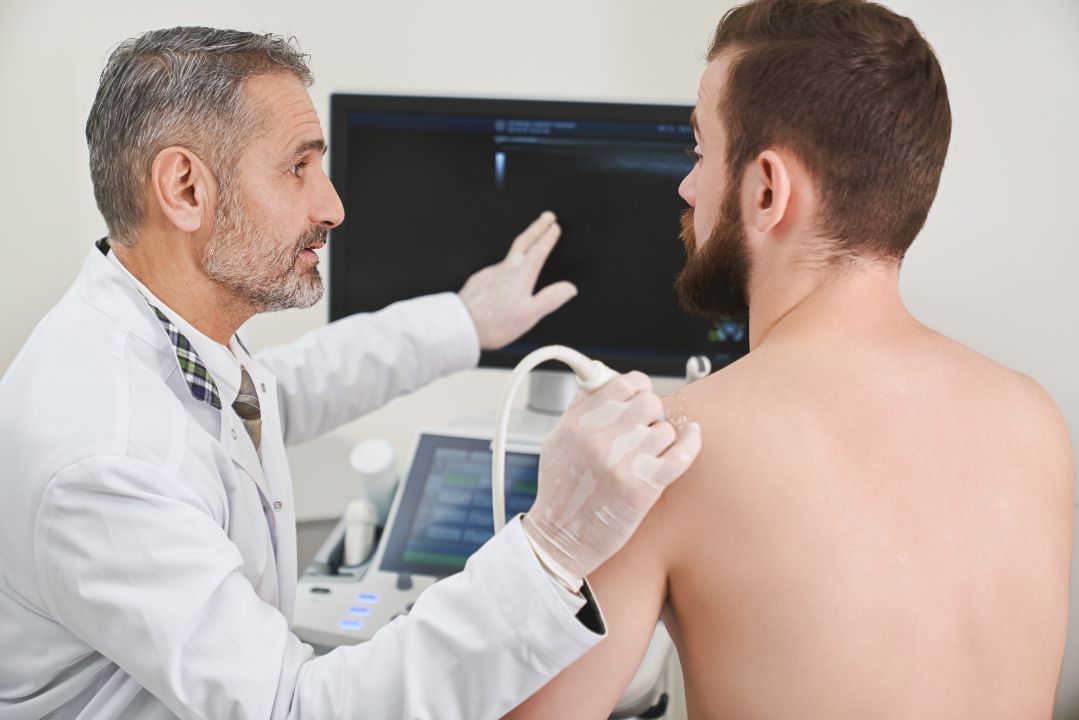If you suffer from shoulder pain or have difficulty moving your shoulder, you may be experiencing Rotator Cuff Syndrome. This condition affects the group of muscles and tendons that surround the shoulder joint, and it can be caused by a variety of factors, including injury, overuse, and shoulder muscle imbalance.
Rotator Cuff Syndrome refers to a condition that affects the rotator cuff tendons and muscles in the shoulder. The rotator cuff is a group of muscles and tendons that connect the upper arm bone to the shoulder blade, providing stability and allowing a wide range of motion in the shoulder joint. Rotator Cuff Syndrome results from an imbalance or strain in the shoulder muscles, causing inflammation, pain, and limited mobility.

Photo Credit: amenic181, Envato
Shoulder muscle imbalance is a major contributing factor to Rotator Cuff Syndrome. This occurs when the muscles that control the shoulder blade and upper arm are not working together properly, leading to an unnatural position of the shoulder joint. Shoulder muscle strain is another cause, typically caused by repetitive overhead motions or sudden trauma.
“Rotator Cuff Syndrome results from an imbalance or strain in the shoulder muscles.”
Individuals who participate in activities that involve repetitive overhead movements such as tennis, swimming, or weightlifting, are at a higher risk of developing Rotator Cuff Syndrome. Additionally, the condition is more common in individuals over 40 years of age due to the natural wear and tear of the rotator cuff muscles and tendons over time.
Rotator Cuff Syndrome is characterized by a range of symptoms that can be quite debilitating. Individuals who suffer from this condition often experience a combination of the following:
If you are experiencing any of these symptoms, it is important to see a healthcare professional for an accurate diagnosis and treatment plan.
Note: The symptoms of Rotator Cuff Syndrome can be similar to those of other shoulder conditions. It is important to seek medical advice to ensure an accurate diagnosis is made.

Photo Credit: leungchopan, Envato
Rotator Cuff Syndrome is caused by a variety of factors, including Rotator cuff injury, shoulder muscle imbalance, and overuse. Understanding the root cause can help individuals prevent the onset of symptoms.
The Rotator cuff is a group of tendons and muscles that surround the shoulder joint, which can become injured due to repetitive activities, such as lifting heavy objects, playing sports, or performing manual labour. Over time, this can cause inflammation and lead to Rotator Cuff Syndrome.
Shoulder muscle imbalance is another common cause of Rotator Cuff Syndrome. When certain muscles in the shoulder are weaker than others, this can cause imbalances and lead to overuse injuries. These imbalances can be caused by a variety of factors, including poor posture, improper lifting techniques, or lack of exercise.
Overuse is a significant contributor to the development of Rotator Cuff Syndrome. Repetitive activities such as throwing, lifting, and reaching can cause stress on the rotator cuff tendons leading to microtrauma which will lead to inflammation. Over time, this can lead to significant injury.
“If left untreated, Rotator Cuff Syndrome can cause significant pain and discomfort, making everyday tasks difficult.”
Overall, the causes of Rotator Cuff Syndrome are varied, but identifying and addressing them is key to preventing the onset of symptoms. By practicing good posture, avoiding repetitive activities or overuse, and seeking treatment for injuries as they occur, individuals can help prevent Rotator Cuff Syndrome from developing in the first place.
If you have been diagnosed with Rotator Cuff Syndrome, there are several treatment options available to manage your symptoms and help you recover. The type of treatment recommended for you will depend on the severity of your symptoms, the underlying cause of your condition, and your overall health.
In many cases, Rotator Cuff Syndrome can be managed with non-surgical treatments. The following options may be recommended:
If non-surgical treatments are not effective, surgery may be recommended. The following surgical options may be considered:
It’s important to discuss your options with your doctor to determine the best course of treatment for your individual needs. With proper treatment and care, most people with Rotator Cuff Syndrome can recover and regain the normal function of their shoulder.

Photo Credit: serhiibobyk, Envato
Effective treatment options are available for Rotator Cuff Syndrome. The choice of treatment depends on the severity of the condition and the individual’s needs. Typically, non-surgical approaches are considered before surgery.
Non-surgical treatments for Rotator Cuff Syndrome can help alleviate pain and improve mobility. These include:
If non-surgical treatments do not improve the condition, surgery may be required. Surgery may be considered for individuals with severe Rotator Cuff Syndrome, or those who do not respond to non-surgical treatments. Types of surgery for Rotator Cuff Syndrome include:
It is important to discuss treatment options with a medical professional to determine the best course of treatment for each individual.